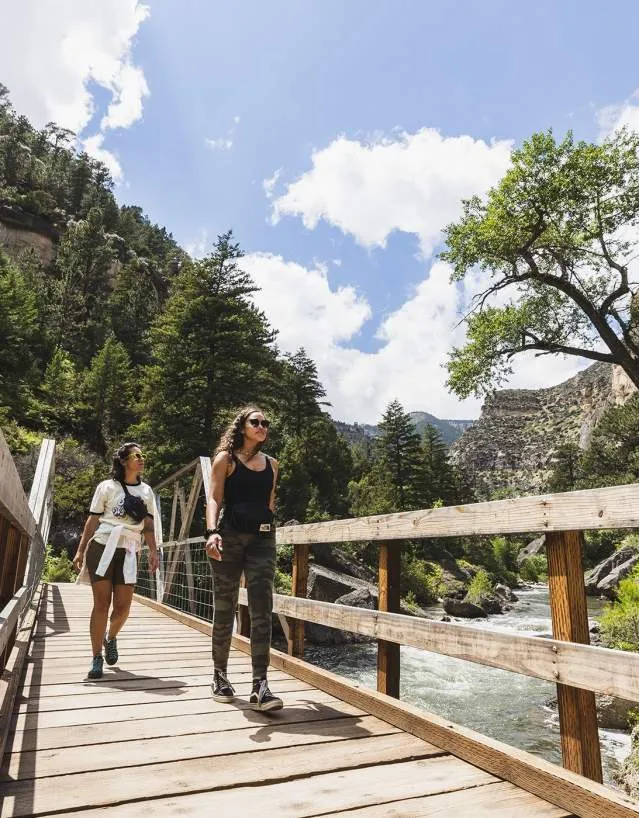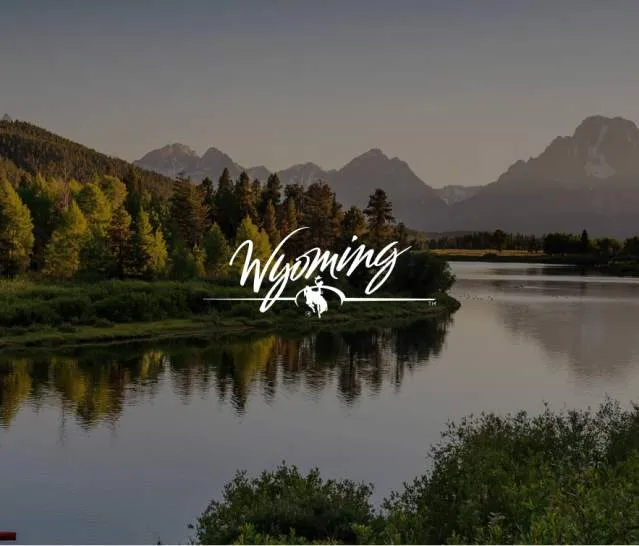Wyoming is an undisputed paradise for hikers, offering unparalleled access to vast, untamed wilderness. Planning Wyoming hiking trips opens the door to exploring towering peaks, deep canyons, pristine lakes, and dynamic geothermal areas. With millions of acres of public land, including iconic national parks and lesser-known state gems, Wyoming provides a diversity of landscapes and trails that cater to every level of hiker. Whether you dream of a challenging multi-day backpacking adventure or a leisurely day hike to a scenic waterfall, the Cowboy State promises memorable outdoor experiences.
One of the primary draws for Wyoming hiking trips is the sheer abundance of public land. The state boasts eight national forests, covering millions of acres of mountains and woodlands. Additionally, it is home to parts of two world-famous national parks, numerous state parks, and vast tracts of Bureau of Land Management (BLM) and state lands. This extensive network ensures that finding breathtaking trails is never an issue. From the northern reaches bordering Montana and Idaho down to the southern forests near Colorado, opportunities for exploration abound across the state.
Exploring Iconic Destinations on Wyoming Hiking Trips
World-renowned for their dramatic landscapes, Yellowstone and Grand Teton National Parks are crown jewels for Wyoming hiking trips. In Yellowstone, hikers can explore the unique geothermal features of the Upper Geyser Basin, witnessing famous geysers like Old Faithful, Castle, and Beehive. Canyon Country offers trails with stunning views of the Yellowstone River and its powerful waterfalls, winding through thermal areas and old-growth forests. These trails provide diverse perspectives on the park’s dynamic geology and vibrant ecosystems.
Just south of Yellowstone, Grand Teton National Park presents a different but equally spectacular hiking experience. Dominated by the jagged peaks of the Teton Range rising abruptly from the valley floor, the park offers trails ranging from easy lakeside strolls to strenuous climbs. Popular options include day hikes around Bearpaw and Trapper Lakes, offering stunning mountain reflections. More ambitious hikers can tackle sections of the demanding Grand Teton Loop, a multi-day trek through alpine terrain with rewarding vistas.
 Hiker overlooks Tongue River Canyon in WyomingWyoming’s state parks and historic sites also offer fantastic hiking opportunities, often with less crowds than the national parks. Curt Gowdy State Park, located near Cheyenne, features a network of trails around reservoirs, including a popular hike to Hidden Falls. Sinks Canyon State Park near Lander is home to the unique geological phenomenon where the Popo Agie River disappears into a sinkhole and reappears further downstream, with scenic trails like the one leading to Popo Agie Falls.
Hiker overlooks Tongue River Canyon in WyomingWyoming’s state parks and historic sites also offer fantastic hiking opportunities, often with less crowds than the national parks. Curt Gowdy State Park, located near Cheyenne, features a network of trails around reservoirs, including a popular hike to Hidden Falls. Sinks Canyon State Park near Lander is home to the unique geological phenomenon where the Popo Agie River disappears into a sinkhole and reappears further downstream, with scenic trails like the one leading to Popo Agie Falls.
For hikers seeking truly epic adventures, a portion of the Continental Divide Trail (CDT) traverses Wyoming. This monumental trail stretches for approximately 550 miles through the state, offering challenging terrain and unparalleled solitude. It enters Wyoming in the northwestern corner of United States near Yellowstone National Park and exits in the Medicine Bow National Forest in the south. Hiking the CDT is a demanding endeavor that rewards with incredible backcountry experiences and vast, unspoiled landscapes.
Planning the Perfect Wyoming Hiking Trips
Successfully planning Wyoming hiking trips requires considering the time of year and the specific area you wish to visit. The prime hiking season typically runs from late spring through early autumn, though conditions can vary greatly by elevation. Lower elevation trails might be accessible earlier, while high mountain passes often remain snow-covered until mid-July. Always check current trail conditions, weather forecasts, and potential closures before heading out. Spring and fall can bring unpredictable weather, including snow at higher elevations.
Essential gear is crucial for any Wyoming hiking trips. Sturdy hiking boots are a must, as trails can be rocky and uneven. Layers of clothing are vital due to rapidly changing mountain weather. Don’t forget rain gear, even on seemingly clear days. Navigation tools (map, compass, GPS), plenty of water, high-energy snacks, a first-aid kit, sunscreen, and insect repellent should always be in your pack. For longer trips or backcountry hikes, bear spray is highly recommended, especially in areas frequented by grizzly bears like Yellowstone and Grand Teton.

Safety should be your top priority on any hiking trip in Wyoming. Be aware of wildlife, including bears, moose, elk, and bison, and know how to react if you encounter them. Maintaining a safe distance is key. Stay on marked trails to protect fragile ecosystems and avoid getting lost. Inform someone about your hiking plans, including your intended route and expected return time. Practicing Leave No Trace principles is essential to preserve Wyoming’s natural beauty for future generations of hikers.
Beyond the Trail: Enhancing Your Hiking Trip Experience
While hiking is the main event for Wyoming hiking trips, don’t miss the chance to experience the local culture and charm. Small towns scattered throughout the state offer a glimpse into the rugged Western lifestyle. Engaging with local communities provides opportunities to learn about the region’s history, traditions, and perhaps discover some hidden gems beyond the popular trails. Local visitor centers and ranger stations are invaluable resources for up-to-date trail information and local insights.
Exploring Wyoming’s unique flavors can also be a highlight of your hiking trip. After a strenuous day on the trail, there’s nothing better than a hearty meal. Look for local diners and restaurants offering classic Western fare, often featuring locally sourced meats and produce. Some areas might even offer specific local delicacies. Connecting with the food scene provides another layer of understanding about the local identity and the resources that sustain life in this vast, wild landscape.
 Hikers near mountains, likely in Wyoming National ParkWyoming offers endless possibilities for memorable hiking trips, whether you’re seeking challenging mountain ascents, serene forest walks, or encounters with diverse wildlife. The state’s commitment to preserving its natural heritage means that hikers can experience true wilderness in its most authentic form. With careful planning and respect for the environment, your adventure in Wyoming’s stunning landscapes will be rewarding and unforgettable.
Hikers near mountains, likely in Wyoming National ParkWyoming offers endless possibilities for memorable hiking trips, whether you’re seeking challenging mountain ascents, serene forest walks, or encounters with diverse wildlife. The state’s commitment to preserving its natural heritage means that hikers can experience true wilderness in its most authentic form. With careful planning and respect for the environment, your adventure in Wyoming’s stunning landscapes will be rewarding and unforgettable.
Frequently Asked Questions About Wyoming Hiking Trips
What are the best national parks for Wyoming hiking trips?
Yellowstone National Park and Grand Teton National Park are widely considered the top national parks for hiking in Wyoming, offering diverse terrain and iconic scenery.
Discover the Best Overnight Summer Camps in Texas
Your Ultimate Guide to Oktoberfest Los Angeles 2024
Discover the Best Things to See in Sarasota
When is the best time of year for hiking in Wyoming?
Generally, late spring (June) through early autumn (September) is the best time for Wyoming hiking trips, though high-country trails may not be snow-free until mid-summer.
Are there easy hiking trails in Wyoming suitable for families?
Yes, many state parks and national parks offer easy, family-friendly trails, such as paths in Sinks Canyon State Park or lakeside trails in Grand Teton. There are numerous resources available listing accessible options.
Do I need to be concerned about wildlife while hiking in Wyoming?
Yes, wildlife encounters are possible. It’s important to be bear aware (carry bear spray and know how to use it), maintain a safe distance from all animals, and never feed wildlife. Hikers should make noise on trails to avoid surprising animals.
What should I pack for a Wyoming hiking trip?
Essential gear includes sturdy hiking boots, layered clothing (including rain gear), navigation tools (map, compass, GPS), plenty of water, snacks, a first-aid kit, sunscreen, insect repellent, and bear spray (in appropriate areas).
Can I hike with my dog in Wyoming?
Regulations vary greatly depending on the specific area. Dogs are generally allowed on trails in national forests and many state parks (often on leash), but are typically not allowed on trails in national parks like Yellowstone and Grand Teton (except in developed areas or certain paved paths). Always check specific regulations before bringing your dog.
